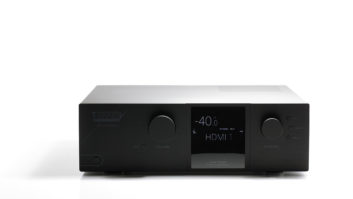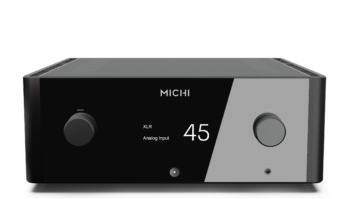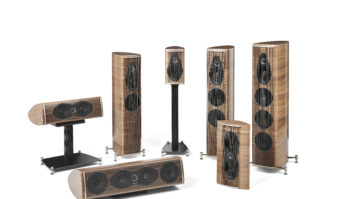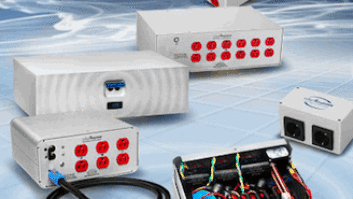A home theater, when properly designed, can provide a welcome refuge from the stressful realities of the daily grind of life. The challenge, however, is that the outside world does not always cooperate by keeping its noise levels down. Thats where the benefits of sound isolation products and design techniques can come into play for home theater designers and their clients.
Sound isolation is not that same as a home theaters internal acoustics. Acoustical treatments applied to theater room surfaces are used to control sound reflection, absorption, and dispersion characteristics of the room. While important in their own right, such acoustical treatments have little effect on how much sound passes through walls, floors, doors, or other barriers. To achieve a high-quality listening space, you need careful design of both the room acoustics and its sound isolation.
Setting a Goal
How quiet should it be in the home theater? How much quiet is the client willing to pay for? All of this needs to be established at the start of any sound isolation project. Acoustical engineers use the noise criterion (NC) rating to describe the target noise goal for the room. For this specification, the allowable sound pressure level (SPL) measured in octave bands, varies with frequency, permitting higher SPLs at low frequencies than at higher frequencies, given that the human ear is less sensitive to low frequencies.
A typical home might have an NC of about 30. But Dennis Erskine, CEO of Atlanta-based integration firm Design Cinema Prive, notes that, the softest sound thats recorded on the movies soundtrack is 22 dB. If you are playing your soundtracks back at reference level, you are missing all of the sound from 30 dB down to 22 dB. Its masked by the background noise.
The target for recording studios is often NC-20 or lower. THX has extended its THX Certified Screening Room program to include residential screening rooms. Such a room would have to meet a noise criterion of NC-20 or better, free from any distracting periodic or transient noise such as door slams, foot falls, plumbing, or motor noise. NC-20 is a very demanding level to meet. Richard Rives Bird, president of acoustical consultancy Rives Audio, judges that it can be almost impossible in some situations, and considers NC-25 a very realistic goal for a home theater.
The building industry has developed a standardized rating for how much a wall, ceiling, floor or other partition attenuates sound. Known as the partitions sound transmission class (STC), it can be loosely described as the number of dB of attenuation provided by the barrier. While the STC rating is used throughout the building industry, those designing home theaters need to be aware that STC does not take into account a materials transmission loss performance at frequencies below 125 Hz. As Erskine points out, subwoofers start at 80 Hz, and go down to 20 Hz, making STC a useless parameter for home theater design. To really understand a materials sound isolation performance, you will need to examine the test data (transmission loss, or TL) at each frequency, i.e., across the audible range.
Controlling Noise
Sound travels. That is its nature. Structure-borne sound transmission can be very tough to control. Inserting breaks in a structure can help to reduce sound and vibration because they dont have a continuous path from Point A to Point B. For example, if the home being planned will be built on a concrete slab, arrange it so that the home theater and the rest of the house are on two independent slabs, with an asphalt or other flexible separator between them.
Wall studs offer yet another path for structure-borne sound propagation between two adjoining rooms. One way to break this path is to resiliently mount the drywall on one side of the wall, instead of directly attaching it to the studs, while attaching the drywall directly to the studs on the other side like normal. Brian Ravnaas, co-founder and technical director of the Green Glue Company, speaks very highly of PAC Internationals Resilient Sound Isolation Clips (RSIC), as well as Kinetics Noise Controls IsoMax clips as good solutions for resilient mounting.
Another way to achieve the same effect is to build a double wall by setting up two parallel rows of studs (see Figure 1). With this approach, you can mount the drywall directly to the studs, because the two rows of studs are independent of each other. Spacing can be the barest minimum, as long as theres no contact between the two halves of the wall, but theres benefit in wider spacing. This is because even though there is no structural connection between the two rows of studs, sound-induced flexing of the drywall membrane on one wall face willat low frequenciesstill be air-coupled to that on the opposite side, due to the entrapped air volume between the two walls.
Of course, while such a double-stud wall breaks one structural path, there can still be other flanking paths that structure-borne sound can take. One route is down the studs of one wall half to the floor or sub-floor, then up the studs on the other side. An alternate route is via the ceiling. Kinetics offers its Wallmat product, a resilient mat made from compressed fiberglass that can be placed between the floor and the stud walls floorplate, to mechanically isolate the two. It can be used in the same fashion at the ceiling. Other manufacturers offer similar products.
A wall has mass, and mass is an important way to attenuate sound, particularly at high frequencies. But mass isnt a walls only property. It also has stiffness (rigidity). The walls stiffness will interact with its mass so that it will be inclined to vibrate at some particular frequency, which is referred to as its natural resonant frequency. If this happens to be a very high-Q resonance (one with very little frictional damping), then the wall will tend to act almost like an open window to sound at that frequency.
The best way to control resonances within the rooms walls, floor, and ceiling is with constrained-layer damping. With this approach, room surfaces are made up of layers of drywall, plywood, or other materials, with some type of viscoelastic damping compound in between layers. The damping material lowers the Q of any resonances, as any flexing of the multi-layered sandwich sets up shear stresses within the damping compound, and these shearing forces get dissipated as minute amounts of heat.
Two of the better-known products based on constrained-layer damping are Green Glue, from the Green Glue Company, and QuietRock, manufactured by Quiet Solution. QuietRock is a multi-layered, damped panel that is used in place of drywall. It is installed in essentially the same fashion as regular drywall, butting each factory-made panel as tightly as possible against its neighbor. Once up, the wall can be mudded and finished the same as conventional drywall. For floors, Quiet Solution offers QuietWood, which is made up of multiple layers of plywood with Quiet Solutions damping material between layers.
Green Glue is used with regular drywall. You simply put up one layer of drywall, then apply a second layer, with Green Glue in between the two. (You can keep adding layers, for even more sound isolation.) Green Glue can be used for floors, as well, between layers of plywood, particle board, or oriented strand board.
When customers call seeking Ravnaas advice, he offers a Good/Better/Best menu of options, depending on budget, and how much isolation the customer is looking to achieve. His Good approach is to use Green Glue between two layers of drywall on a single set of studs (Case C in Figure 2). The Better approach utilizes the same construction as Good, but adds RSIC or IsoMax clips, for mechanical isolation. Ravnaas Best approach uses double stud walls with double layers (or even more) of drywall on the outside faces of the stud walls, with Green Glue between layers.
Not an Easy Task
As indicted by all the aforementioned steps, it takes a lot of specialized knowledge and experience to successfully pull off a sophisticated sound isolation project. Dennis Erskine calls the field complex enough and fraught with so many easy failures that will defeat everything that youve done. Erskine, who also serves as an instructor for the Home Acoustics Alliance (HAA) and as a CEDIA subject matter expert in home theater design, takes the complexity of the topic so seriously that he recommends that integrators engage a specialist in sound isolation instead of tackling such a project on their own.
A former loudspeaker designer, Alan R. Frank ([email protected]) is a networking consultant and freelance writer.







